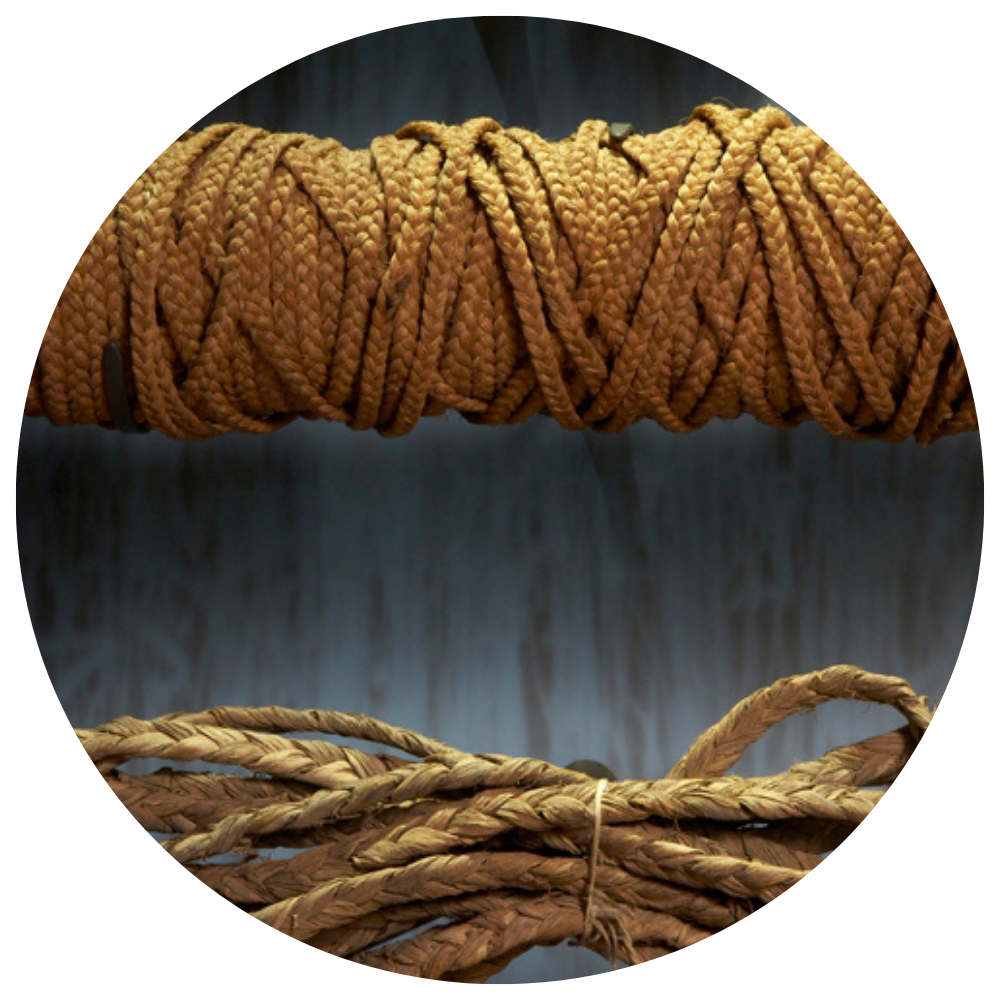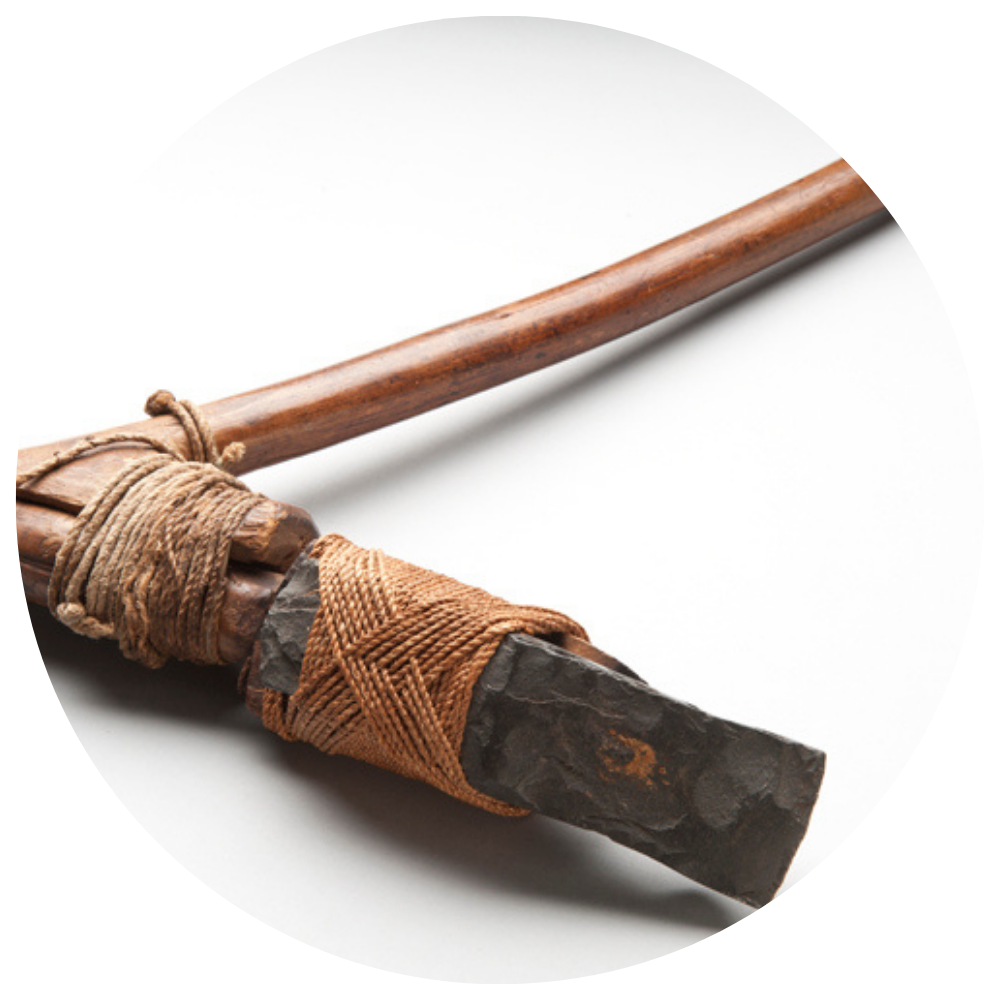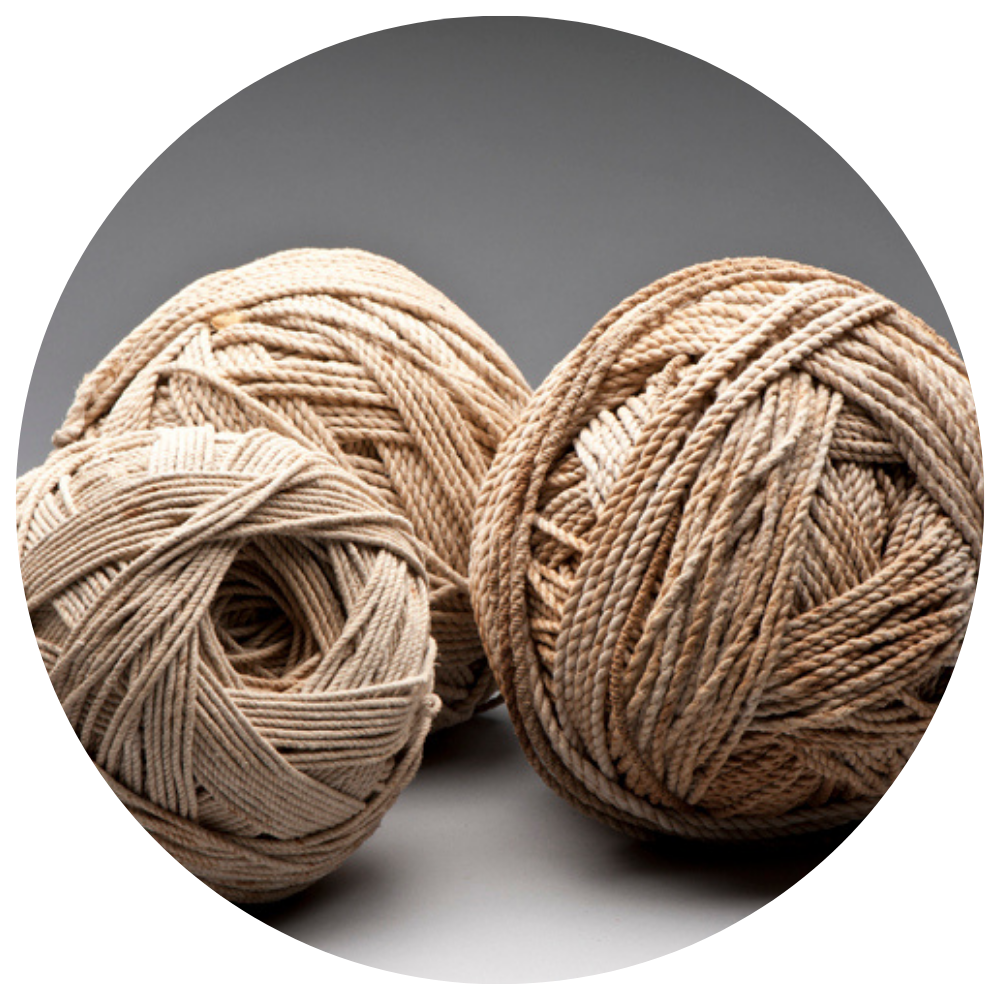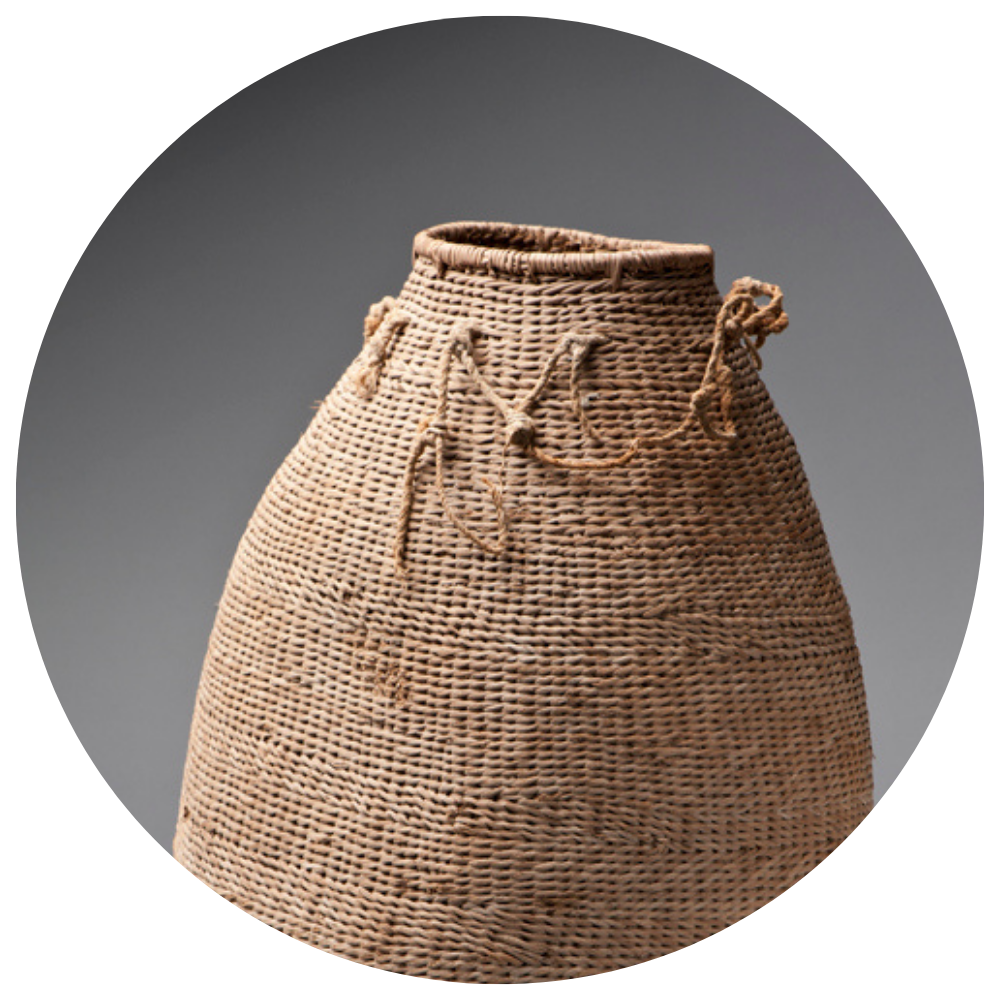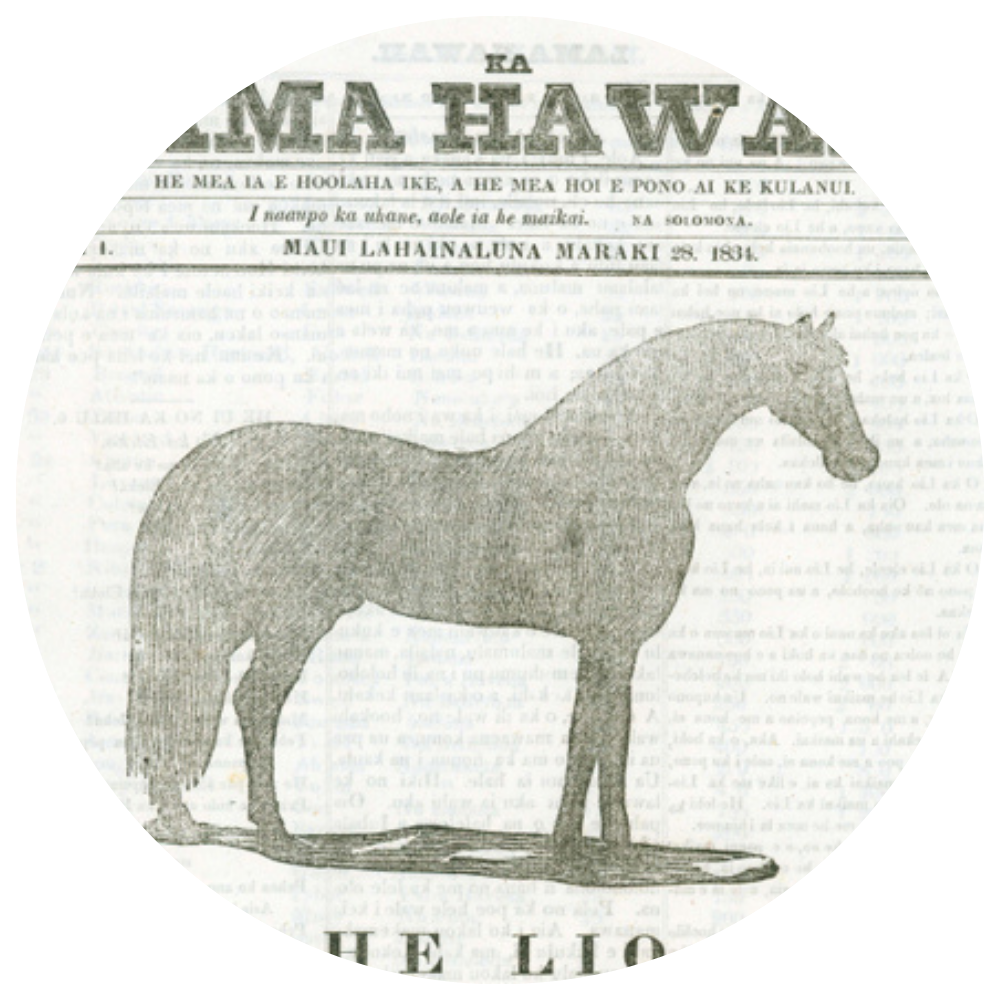Wooden Ki‘i with a Sennit Cordage Pāʻū

In ‘Aiha‘a Position
The early Polynesians that arrived in the Hawaiian archipelago were keen observers of the natural world. The plants, animals, and physical landscape of their previous Oceanic homes shaped their lives in intimate ways. Arrival in Hawai‘i meant the addition of new processes and products, spurred by an introduction to materials and resources native to a new home.
One of the many customary practices that was both continued and adapted in the Hawaiian Islands was the making of kaula (cordage). Kaula was a foundational part of many of the tools and operations of daily life. It lashed together the parts of a wa‘a (canoe) and the timbers of a hale (house). It was a means of obtaining food, being woven into ‘upena (fishing nets), hīna‘i (fish traps), and individual aho (fishing lines). ‘Aha cords marked the sacred boundaries of ali‘i dwellings. Used in recreational activities, kaula bound the rails of the papa hōlua (hōlua sled) and became the aho (string) used to fly one’s lupe (kite). It was essential to the creation of the ‘ahu ‘ula (feather capes) worn by the Ali‘i Nui, providing the material for both the thin, yet strong nets treasured by the kia manu (bird catchers) and the naepuni (cord netting) that held the feathers of these magnificent capes. Cordage protected the warrior in battle, binding the sharp teeth of the manō (shark) to a wooden handle in a leiomano and providing a base for the woven mahi‘ole that deflected blows to the head.
The plants, shrubs, and even trees of Hawai‘i provided a wide variety of materials from which these skilled practitioners created cordage. The most common of the cordages, ‘aha (sennit), came from the niu kafa (woody coconut). The thickness of coconut fibers, combined with their relative water resistance, made ‘aha an excellent material for use on canoes. Hawaiians also wove cordage from ‘ie‘ie (Freycinetia arborea), ‘ākia (Wikstroemia [12 species]), māmaki (Pipturus [4 species]), wauke (Broussonetia papyrifera), ōpuhe (Urera [2 species]), hau (Hibiscus tiliaceus), hala (Pandanus tectorius), and ‘uki‘uki (Dianella sandwicensis), among other materials. Certainly the most prized of cordages was olonā (Touchardia latifolia). This member of the nettle family is one of the strongest fibers on earth and is endemic to Hawai‘i. Its unique combination of both strength and lightness made it highly prized among Native Hawaiians. Historian Samuel Kamakau wrote in 1869, “O ke olona kekahi mea i makemake nui ia e ke kanaka, a me ka lahui, a ua kau nui ia ke olona e ke kanaka mahiai” (Olonā was a thing highly prized by one and all.) He further explained, “O ke olona, he kumu ai he kumu ia, he kumu waiwai, a he kumu hoola ilihune” (The olona was a source of food, fish, wealth, and life to the poor.) This treasured plant, however, is particular in its preference of growing conditions, favoring boggy interior valleys and wet upland areas. Lands that could provide olonā were considered ‘āina momona (rich lands). Places such as Honopū on Kaua‘i, parts of Moloka‘i, and areas of East Māui were particularly famous for olonā and it was a source of their wealth. When the land itself was divided in the Māhele (1848-1850), many of the claims from East Māui included parcels for growing olonā.
As foreign ships arrived in Hawai‘i and began to trade, crews quickly noticed and commented on the local cordage. One seaman noted Native fishing lines “three to four hundred fathoms (1800 -2400 ft) long, and perfectly well made.” He continued that the lines he had purchased were “made with two, and others three strands, and much stronger than our lines of twice the size.” Indeed, the Native craftsmanship and inherent superiority of olonā cordage was to become widely known. During the 1870s, Swiss Alpine clubs eager to utilize the unusual strength and weatherproofing of the Hawaiian material purchased supplies of olonā cordage from King David Kalākaua.
Cords have always connected generations, with one’s piko (umbilical cord) physically linking one generation to the next. Today cords are linking more distant generations. The making of cordage, so valued a skill in past centuries, is one of the many traditional practices that have found eager current-day students. It is a foundational skill that is a necessary component of many other contemporary practices. A vibrant and growing group of new artisans, relying on the training and knowledge of their kūpuna (ancestors), are expanding on past usages of cordage to create exciting and contemporary adaptations of nā mea Hawai‘i (things Hawaiian), and in doing so are strengthening the ties that bind past and present.
Image:
Wooden ki‘i [image] in ‘aiha‘a (low style)position with mother-of-pearl shell eyes and a sennit skirt. Remnants of a kapa malo are visible beneath the waist of the sennit skirt.
Origin: Hawai‘i
Call Number: Q 205651
Artifact Number: C.09595


